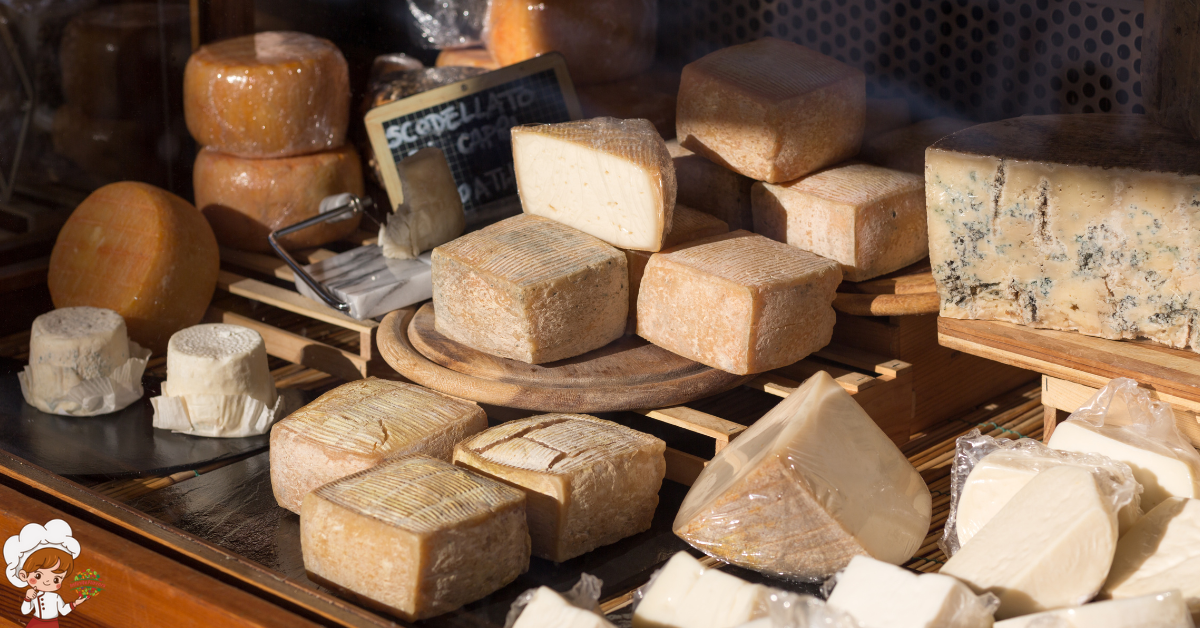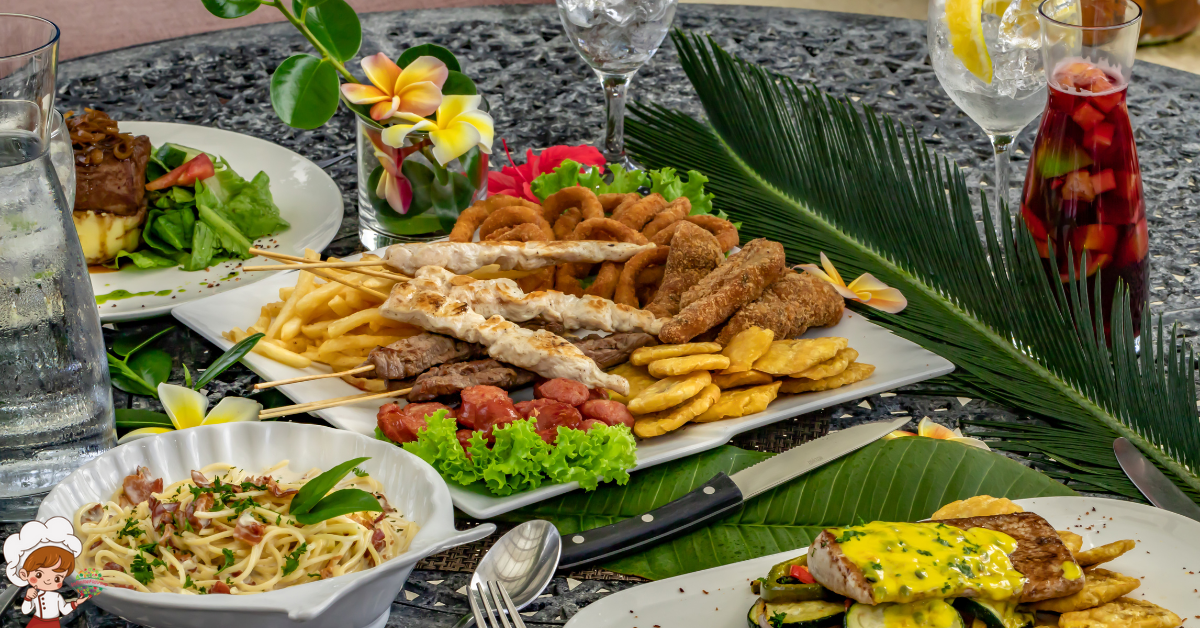Exploring The Best Regional Chinese Cuisines

Exploring The Best Regional Chinese Cuisines
Are you ready to embark on a culinary adventure through the diverse flavors of regional Chinese cuisines? Imagine yourself savoring the spicy and bold flavors of Sichuan, indulging in the delicate and refined Cantonese delicacies, and discovering the authentic tastes of Beijing. From the fiery spices of Hunan to the unique fusion of flavors in Yunnan, each region offers a distinct culinary experience. You can also delve into the rich culinary treasures of Jiangsu, sample the unique cuisine of Xinjiang, and get a glimpse into the gastronomy of Shandong. Don’t miss the opportunity to discover the tastes of Hubei. Get ready to explore the vibrant and diverse world of regional Chinese cuisines.
The Flavors of Sichuan
If you’re looking to spice up your culinary adventures, delve into the fiery and bold flavors of Sichuan cuisine. Known for its distinct numbing sensation and aromatic and spicy dishes, Sichuan cuisine offers a truly unique and unforgettable dining experience.
One of the defining characteristics of Sichuan cuisine is the numbing sensation it imparts. This sensation, known as “ma,” is achieved by using Sichuan peppercorns, a spice that numbs the mouth while enhancing the flavors of the dish. It adds a tingling, almost electric sensation to your taste buds, making every bite an adventure for your senses.
Sichuan cuisine is also famous for its aromatic and spicy dishes. The use of a wide variety of spices, such as chili peppers, garlic, ginger, and star anise, creates a complex and robust flavor profile in each dish. From the iconic Kung Pao chicken to the mouth-watering Mapo tofu, Sichuan dishes are known for their bold and intense flavors that leave a lasting impression.
One of the most popular dishes in Sichuan cuisine is hot pot. This communal dining experience involves cooking various ingredients, such as thinly sliced meats, vegetables, and tofu, in a simmering broth. The broth itself is typically infused with Sichuan peppercorns and chili peppers, creating a rich and spicy base for the ingredients. The combination of flavors and the interactive nature of hot pot make it a favorite among locals and tourists alike.
Cantonese Delicacies
As you continue your culinary exploration, discover the exquisite flavors of Cantonese delicacies. Cantonese cuisine is renowned for its wide variety of dishes, including the famous Cantonese dim sum and seafood specialties.
Cantonese dim sum is a beloved culinary tradition that consists of bite-sized portions of food served in small steamer baskets or on small plates. These delectable treats are often enjoyed during yum cha, a traditional Cantonese tea-drinking ritual. From steamed dumplings filled with succulent shrimp or tender pork, to fluffy buns stuffed with barbecued pork or custard, each bite of Cantonese dim sum is a burst of flavor and texture.
Seafood is also a highlight of Cantonese cuisine, thanks to the region’s proximity to the ocean. Cantonese chefs are known for their ability to showcase the natural flavors of seafood while using minimal seasoning. Popular seafood dishes include steamed fish with ginger and scallions, stir-fried clams with black bean sauce, and crispy salt and pepper squid. The freshness and quality of the seafood are paramount in Cantonese cooking, resulting in dishes that are delicate, light, and full of natural umami flavors.
Whether you’re indulging in the delicate, bite-sized delights of Cantonese dim sum or savoring the fresh flavors of seafood specialties, Cantonese cuisine offers a culinary experience that is both refined and satisfying. With its emphasis on quality ingredients, meticulous preparation, and balanced flavors, Cantonese delicacies are sure to tantalize your taste buds and leave you craving for more.
Exploring Authentic Beijing Cuisine
When it comes to authentic Beijing cuisine, you’ll find a range of signature dishes that truly represent the city’s culinary heritage. From the famous Peking duck, with its crispy skin and succulent meat, to the flavorful hot and sour soup, Beijing offers a variety of dishes that will tantalize your taste buds. These dishes are prepared using traditional cooking techniques that have been passed down through generations, ensuring that the flavors remain true to their origins. Additionally, Beijing cuisine has been influenced by neighboring regions, such as Shandong and Inner Mongolia, adding unique flavors and ingredients to the culinary tapestry of the city.
Beijing’s Signature Dishes
When exploring authentic Beijing cuisine, you’ll be transported to a world of culinary delights that showcase the unique flavors and traditions of this vibrant Chinese city. One of the highlights of Beijing’s cuisine is its street food. As you wander through the bustling streets, you’ll find a plethora of food stalls offering a variety of snacks and dishes. From Jianbing, a savory pancake filled with egg, crispy wonton, and various sauces, to Shengjianbao, a pan-fried bun filled with juicy meat, the street food scene in Beijing is a feast for the senses.
Another aspect of Beijing’s signature dishes is its traditional desserts. One popular dessert is Douzhi, a fermented mung bean drink that has a tangy and refreshing taste. Another favorite is Tanghulu, skewered fruits coated in a hard sugar glaze. These desserts provide a sweet ending to any Beijing culinary adventure.
Traditional Cooking Techniques
To explore the traditional cooking techniques of authentic Beijing cuisine, start by understanding the importance of using specific ingredients and methods. Traditional cooking techniques in Beijing cuisine focus on preserving the natural flavors of regional ingredients while creating dishes that are visually appealing.
One such technique is “bao,” or quick-frying, which involves frying meat or vegetables in a hot wok for a short period of time to retain their crispness. Another technique is “lu,” or braising, which involves slow-cooking ingredients in a flavorful liquid until they become tender and infused with the sauce. Lastly, “hong shao,” or red cooking, is a technique that involves simmering ingredients in a soy sauce-based mixture to enhance their flavors and give them a rich, reddish color. By mastering these traditional cooking techniques, you can create authentic Beijing dishes that are both delicious and visually stunning.
Influences on Beijing Cuisine
Beijing cuisine has been influenced by a diverse range of culinary traditions, resulting in a unique and flavorful culinary experience. Cultural fusion and historical influences have played a significant role in shaping the cuisine of Beijing. The cuisine of the city reflects the blending of different regional flavors and cooking techniques from across China.
One of the major influences on Beijing cuisine is the imperial cuisine of the Qing Dynasty. This cuisine was known for its elaborate preparation methods and the use of high-quality ingredients. The flavors and techniques of the imperial cuisine have had a lasting impact on the culinary traditions of Beijing.
Additionally, the cuisine of Beijing has been influenced by the culinary traditions of northern China. This includes the use of wheat-based products such as noodles and dumplings, as well as the incorporation of hearty and warming ingredients like lamb and mutton.
The Spices of Hunan
Get ready to experience the bold and fiery flavors of Hunan cuisine. Originating from the Hunan province in China, this regional cuisine is known for its vibrant spices and unique combinations of ingredients. Signature dishes like the famous “Chairman Mao’s Red Braised Pork” showcase the powerful flavors of Hunan with its use of chili peppers, garlic, and fermented soybean paste. Influenced by the geography and climate of the region, the spices of Hunan bring a delightful intensity to every bite.
Hunan Spice Origins
Discover the rich and fiery flavors of Hunan cuisine with a tantalizing blend of spices that will leave your taste buds tingling. The history of Hunan spice dates back centuries, with its origins rooted in the province’s unique culinary traditions. Hunan cuisine is known for its bold and vibrant flavors, and the spices used play a crucial role in achieving this distinct taste.
There are different types of Hunan spice, each contributing its own unique flavor profile. Some of the commonly used spices include chili peppers, garlic, ginger, star anise, and Sichuan peppercorns. These spices are carefully chosen and combined to create a perfect balance of heat, fragrance, and complexity in Hunan dishes. The result is a culinary experience that is both unforgettable and addictive.
Signature Hunan Dishes
When exploring the regional Chinese cuisine of Hunan, you’ll find that the spices used in signature Hunan dishes play a vital role in creating their bold and fiery flavors. The origins of Hunan spice can be traced back to ancient times when the region’s lush forests provided an abundance of aromatic herbs and peppers. These spices are known for their intense heat and complex flavors, which are achieved through a careful balance of ingredients like chili peppers, garlic, ginger, and star anise. The culinary influences on Hunan cuisine are diverse, with influences from neighboring provinces like Sichuan and Guangdong. This fusion of flavors creates a unique and exciting dining experience that showcases the rich culinary heritage of Hunan.
- Chili peppers: The main ingredient in Hunan cuisine, chili peppers add heat and depth to the dishes.
- Garlic: Known for its pungent flavor, garlic elevates the taste profile of Hunan dishes.
- Ginger: Adds a warm and spicy kick to the cuisine, enhancing the overall flavor.
Culinary Influences on Hunan Cuisine
You’ll notice that the spices used in Hunan cuisine are influenced by neighboring provinces, adding depth and complexity to the dishes. One of the main culinary influences on Hunan cuisine comes from Sichuan cuisine, known for its bold and fiery flavors. The use of chili peppers and Sichuan peppercorns in Hunan dishes gives them a distinctive heat and numbing sensation.
These spices are carefully balanced with other ingredients to create a harmonious flavor profile. Traditional cooking techniques in Hunan cuisine also contribute to its unique taste. Stir-frying, braising, and smoking are commonly used methods that help infuse flavors into the dishes. The combination of these culinary influences and techniques results in the vibrant and flavorful dishes that Hunan cuisine is known for.
Taste the Diversity of Yunnan
Get ready to experience the rich and varied flavors of Yunnan with its diverse culinary offerings. Yunnan cuisine exploration is a journey that will take your taste buds on an adventure through the vibrant and colorful province of Yunnan in southwestern China. Known as the “Land of Eternal Spring,” Yunnan is not only blessed with breathtaking landscapes but also a treasure trove of culinary delights. Here are three of Yunnan’s culinary specialties that you simply cannot miss:
- *Crossing the Bridge Rice Noodles*: This iconic Yunnan dish is a must-try for any food lover. A steaming hot pot of rich chicken broth is served with a variety of fresh ingredients such as thinly sliced meats, vegetables, and fragrant herbs. The highlight of this dish is the delicate rice noodles that are cooked separately and added to the hot pot just before eating. The noodles symbolize the bridge between the soup and the ingredients, hence the name.
- *Xuanwei Ham*: Hailing from the city of Xuanwei, this famous Yunnan specialty is renowned for its unique smoky flavor and tender texture. The ham is made from local free-range pigs that are cured for several months with a secret blend of spices and then smoked over pine wood. The result is a mouthwatering ham that is often enjoyed as a standalone dish or added to various Yunnan dishes for an extra burst of flavor.
- *Yunnan Wild Mushrooms*: Yunnan’s mountainous terrain and favorable climate make it the perfect place for wild mushrooms to thrive. From the prized matsutake mushrooms to the rare black truffles, Yunnan offers a wide variety of wild mushrooms that are highly sought after by chefs around the world. These earthy delights are often used in stir-fries, soups, and hot pots, bringing a unique and robust flavor to the dishes.
Embark on a culinary journey through Yunnan and discover the diverse flavors and culinary traditions that this enchanting province has to offer. From the fragrant rice noodles to the smoky Xuanwei ham and the wild mushrooms, Yunnan’s culinary specialties will leave you craving for more.
Uncovering the Secrets of Fujian Dishes
Now it’s time to uncover the secrets of Fujian dishes. Get ready to explore the unique ingredients that make Fujian cuisine stand out, from the fragrant red rice wine to the flavorful seafood. Discover the traditional cooking techniques that have been passed down for generations, creating dishes that are both delicious and steeped in history. And of course, we can’t forget about the famous Fujian dishes that have made their mark on the culinary world, like the mouthwatering Braised Pork Belly and the comforting Fish Balls in Soup. Get ready to embark on a culinary adventure through Fujian’s rich and diverse cuisine.
Unique Fujian Ingredients
Discover the seven unique ingredients that give Fujian dishes their distinct flavors and textures. The cuisine of Fujian province in China is known for its use of fresh and flavorful ingredients that are combined with traditional cooking techniques to create unique and delicious dishes. Here are three of the most important ingredients that give Fujian cuisine its special taste:
- Red Rice Wine: Made from fermented glutinous rice, this wine adds a rich and complex flavor to dishes like drunken chicken and red wine chicken.
- Fujian Red Sugar: This special type of sugar is made from sugarcane and has a unique caramel-like taste. It is often used in desserts and sweet soups.
- Fish Sauce: Made from fermented fish, this sauce is a staple in Fujian cuisine. It adds a savory and umami flavor to dishes like braised pork belly and stir-fried vegetables.
These ingredients, combined with the mastery of traditional cooking techniques, make Fujian dishes truly one-of-a-kind.
Traditional Cooking Techniques
To truly understand the secrets behind Fujian dishes, delve into the traditional cooking techniques that bring out their unique flavors and textures. Fujian cuisine is known for its emphasis on fresh ingredients and delicate flavors. One of the traditional cooking techniques used in Fujian cuisine is called “red cooking,” which involves simmering ingredients in a soy sauce-based broth until they become tender and infused with rich flavors.
Another technique is “stewing,” where ingredients are cooked slowly in a flavorful broth to enhance their natural taste. Additionally, Fujian cuisine often incorporates regional ingredient variations, such as using local seafood, like fish and shrimp, to create dishes that are both flavorful and nutritious. The combination of these traditional cooking techniques and regional ingredient variations makes Fujian cuisine truly special and worth exploring.
Famous Fujian Dishes
To truly uncover the secrets of Fujian dishes, let’s delve into the famous dishes that showcase the unique culinary traditions of the region. Fujian, a coastal province in southeastern China, has a rich culinary history that revolves around its abundant seafood. Here are three famous Fujian seafood dishes that are sure to tantalize your taste buds:
- Buddha Jumps Over the Wall (佛跳墙): This luxurious soup is made with a variety of ingredients such as shark’s fin, abalone, sea cucumber, and fish maw. The soup is believed to be so delicious that even a vegetarian monk would be tempted to jump over a wall to have a taste.
- Oyster Omelette (蚵仔煎): This popular street food dish features plump oysters cooked in a crispy egg batter with a savory sauce. The combination of textures and flavors makes it a favorite among locals and visitors alike.
- Steamed Sea Bass (清蒸鲈鱼): This simple yet delicious dish showcases the freshness of the fish. The sea bass is steamed with ginger, scallions, and soy sauce, resulting in a delicate and flavorful dish.
These famous Fujian seafood dishes highlight the region’s culinary expertise and the importance of fresh ingredients in their cuisine.
Jiangsu’s Culinary Treasures
Jiangsu’s culinary treasures offer a delectable array of dishes that showcase the region’s rich culinary heritage. Known for its delicate flavors and exquisite presentation, Jiangsu cuisine has a long history and is highly regarded in China. Jiangsu’s culinary techniques and the use of local ingredients contribute to its unique taste and appeal.
One of the most famous dishes from Jiangsu is “Beggar’s Chicken.” This dish is prepared by marinating a whole chicken in a mixture of spices, wrapping it in lotus leaves, and baking it in a clay crust. The result is a tender and flavorful chicken with a crispy skin. Another popular dish is “Lion’s Head Meatballs,” which are large pork meatballs cooked in a rich and savory sauce. The meatballs are named “Lion’s Head” because of their size and shape, resembling a lion’s head.
Jiangsu’s local ingredients play a significant role in its culinary treasures. Freshwater fish, such as mandarin fish and whitebait, are commonly used in dishes like “Stewed Fish Head with Tofu” and “Shrimp and Crab Roe Soup.” These ingredients are known for their delicate taste and are often cooked using traditional methods to preserve their natural flavors.
In addition to seafood, Jiangsu cuisine also incorporates a wide variety of vegetables and herbs. The region’s fertile soil provides an abundance of fresh produce, including bamboo shoots, water chestnuts, and lotus roots. These ingredients are used in dishes like “Stir-Fried Lotus Roots” and “Braised Bamboo Shoots,” adding a refreshing and crunchy texture to the dishes.
Jiangsu’s culinary treasures are a reflection of its rich cultural heritage and the use of local ingredients. From the delicate flavors of Beggar’s Chicken to the savory Lion’s Head Meatballs, each dish tells a story and leaves a lasting impression. Exploring the culinary delights of Jiangsu is truly a journey worth undertaking.
Sample the Unique Cuisine of Xinjiang
Sample the unique cuisine of Xinjiang by experiencing the diverse flavors and culinary traditions of this region in China. Xinjiang, located in the northwest part of the country, is known for its rich and vibrant food culture that blends influences from Central Asia, the Middle East, and China. Here are three must-try experiences to truly immerse yourself in the culinary delights of Xinjiang:
- Sample the local street food: One of the best ways to get a taste of Xinjiang’s cuisine is by exploring the bustling street food scene. From the sizzling lamb kebabs, known as chuanr, to the fragrant hand-pulled noodles, such as laghman, the streets of Xinjiang are filled with an array of delicious and aromatic dishes. Don’t miss out on trying the crispy and flaky Xinjiang-style flatbread, known as naan, which is often served with savory meat or vegetable fillings.
- Indulge in traditional Xinjiang desserts: Xinjiang is also famous for its delectable desserts that offer a perfect balance of sweetness and richness. One iconic dessert is the nut-filled pastry called goshnan, which is made with a flaky and buttery dough. Another must-try is the refreshing and creamy yogurt, known as qurut, which is often enjoyed with honey or dried fruits. And of course, no visit to Xinjiang is complete without trying the sweet and sticky Xinjiang-style rice pudding, known as nang.
- Discover the flavors of Uyghur cuisine: The Uyghur people, an ethnic minority in Xinjiang, have their own unique cuisine that is characterized by bold flavors and aromatic spices. Don’t miss the chance to try the famous Uyghur dish, polo, which is a fragrant pilaf made with rice, meat, and a variety of spices. Another Uyghur specialty is manta, which are steamed dumplings filled with spiced meat and served with a tangy dipping sauce.
A Glimpse Into Shandong’s Gastronomy
Exploring Shandong’s gastronomy offers a unique glimpse into the rich culinary traditions of the region. Known for its coastal location, Shandong’s seafood specialties are a highlight of its cuisine. The province is famous for its fresh and succulent seafood, including clams, scallops, prawns, and fish. These ingredients are often prepared using simple cooking techniques that highlight the natural flavors of the seafood.
One of the most popular seafood dishes in Shandong is the “Three Delicacies” dish, which consists of squid, shrimp, and scallops stir-fried together with vegetables. The dish is known for its vibrant colors and delicate flavors, making it a must-try for seafood lovers.
In addition to its seafood, Shandong is also known for its regional noodle dishes. One of the most famous is the “Jiaodong” style noodles, which are made from wheat flour and served in a savory broth with various toppings such as braised pork, scallions, and soy sauce. These noodles are known for their chewy texture and rich flavors, making them a comforting and satisfying meal.
Another popular noodle dish in Shandong is the “Liu Sha” noodles, which are tossed in a rich and creamy sauce made from salted duck eggs. The sauce has a unique and indulgent flavor that pairs perfectly with the chewy noodles.
Exploring Shandong’s gastronomy is a delightful experience that allows you to savor the fresh seafood and hearty noodle dishes that are unique to this region. Whether you’re a seafood lover or a noodle enthusiast, Shandong’s culinary offerings are sure to leave a lasting impression.
Discover the Tastes of Hubei
To truly immerse yourself in the flavors of Hubei, indulge in the region’s signature dish, the famous Wuchang fish. Hubei’s cuisine is known for its bold and hearty flavors, and the Wuchang fish embodies this perfectly. This dish is made from a type of freshwater fish called Wuchang bream, which is known for its tender meat and delicate flavor. The fish is usually cooked in a variety of ways, such as steamed, braised, or stir-fried with chili peppers and other spices, resulting in a dish that is both succulent and spicy.
In addition to the Wuchang fish, Hubei has many other famous dishes that are worth trying. Some of Hubei’s regional specialties include:
- Hot dry noodles: This popular street food dish consists of thick wheat noodles that are tossed in a flavorful sauce made from sesame paste, soy sauce, vinegar, and chili oil. It is often topped with thinly sliced cucumber, bean sprouts, and peanuts, adding a refreshing crunch to the dish.
- Three steamed delicacies: This dish is a combination of three steamed dishes – steamed pork with preserved vegetables, steamed salted eggs, and steamed fish with pickled mustard greens. The flavors of these dishes complement each other perfectly, creating a harmonious and satisfying meal.
- Lotus root soup: This nourishing soup is made from lotus root, pork bones, and various Chinese herbs. The lotus root adds a crunchy texture to the soup, while the pork bones and herbs infuse the broth with a rich and aromatic flavor.
Conclusion
So, whether you are a fan of spicy dishes or prefer milder flavors, there is something for everyone in the diverse regional cuisines of China. From the bold and numbing flavors of Sichuan to the delicate and fresh dishes of Yunnan, each region offers a unique culinary experience that is sure to tantalize your taste buds. So why not embark on a culinary adventure and explore the flavors of regional Chinese cuisines for yourself? You won’t be disappointed.








